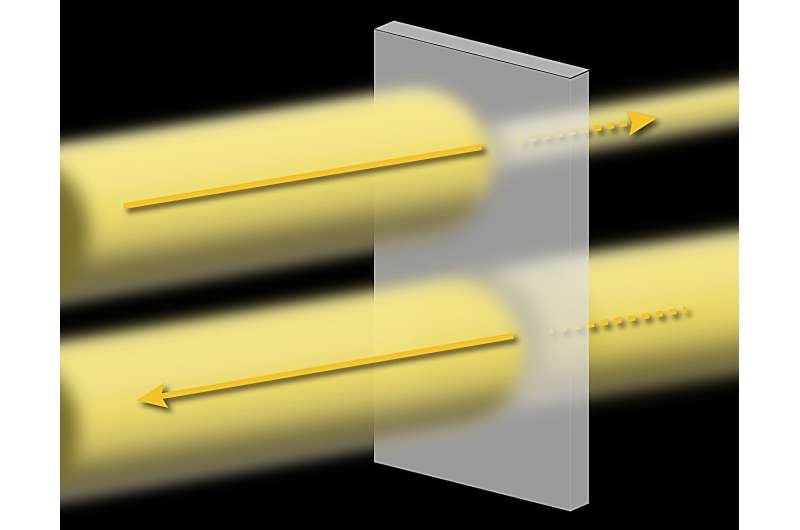This article has been reviewed according to Science X's editorial process and policies. Editors have highlighted the following attributes while ensuring the content's credibility:
fact-checked
peer-reviewed publication
trusted source
proofread
Reimagining the optical diode effect for enhanced optical isolator efficiency

At the heart of global internet connectivity, optical communications form an indispensable foundation. Key to this foundation are optical isolators, created by combining multiple components.
The result is a complex structure that transmits light in only one direction, to prevent damage to lasers and minimize noise by avoiding the reversal of light.
However, some magnetic materials have an optical diode effect—an unconventional nonreciprocal absorption of light manifested by the material itself. This effect leads to a change in transmittance depending on the direction in which the light travels. If this phenomenon can be enhanced, it is expected that optical isolators can be made more compact and efficient.
A team of researchers led by Associate Professor Kenta Kimura of the Graduate School of Engineering at Osaka Metropolitan University investigated the phenomenon of nonreciprocal optical absorption in the magnetoelectric antiferromagnet LiNiPO4 at shortwave infrared wavelengths.
Their findings are published in Physical Review Letters.
Their results showed that the absorption coefficient differs by a factor of two or more when the direction of light propagation is reversed. This large nonreciprocal absorption is attributed to the magnetic properties of the divalent nickel (Ni2+) ions. Furthermore, the researchers have shown that it is possible to switch the optical diode effect with an applied magnetic field in a non-volatile manner.
"The optical diode effect is an interesting subject of study because it is such an unconventional phenomenon that is far removed from common sense and has the potential to realize unexpected applications. However, there are still many problems at present, such as the low operating temperatures," explained Professor Kenta Kimura.
"Nevertheless, this research has demonstrated the usefulness of compounds containing nickel, which has greatly expanded the scope of material selection. Based on this knowledge, we will continue the development of materials exhibiting a higher performance optical diode effect."
More information: Kenta Kimura et al, Nonvolatile Switching of Large Nonreciprocal Optical Absorption at Shortwave Infrared Wavelengths, Physical Review Letters (2024). DOI: 10.1103/PhysRevLett.132.036901
Journal information: Physical Review Letters
Provided by Osaka Metropolitan University




















